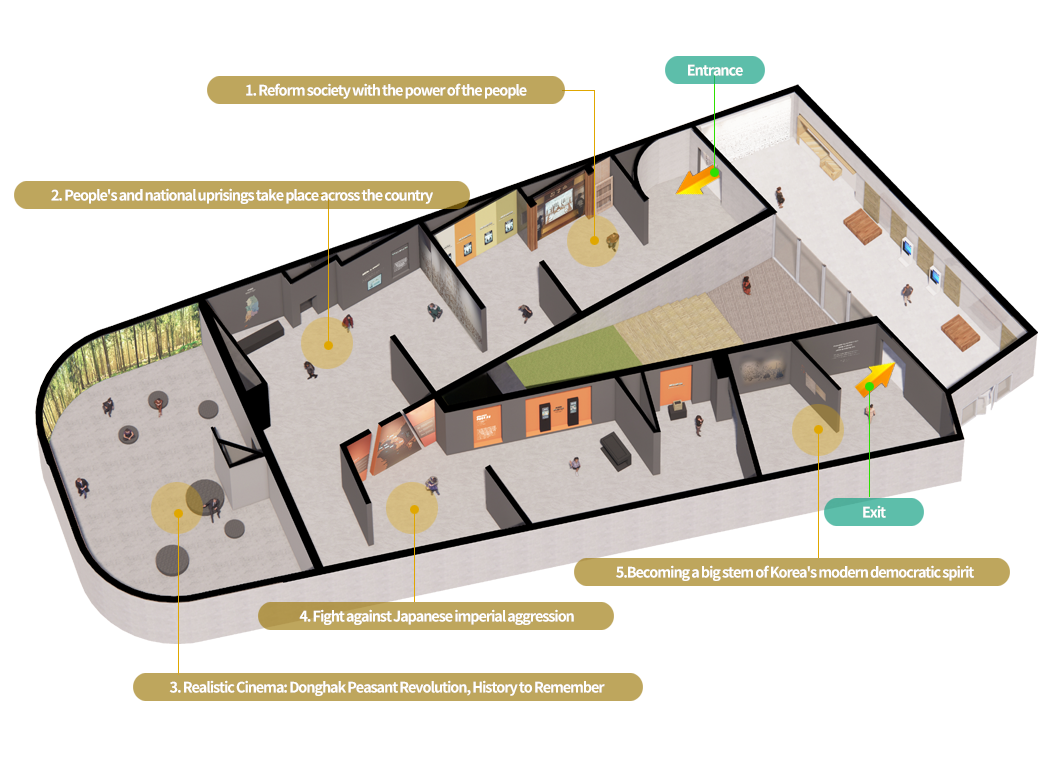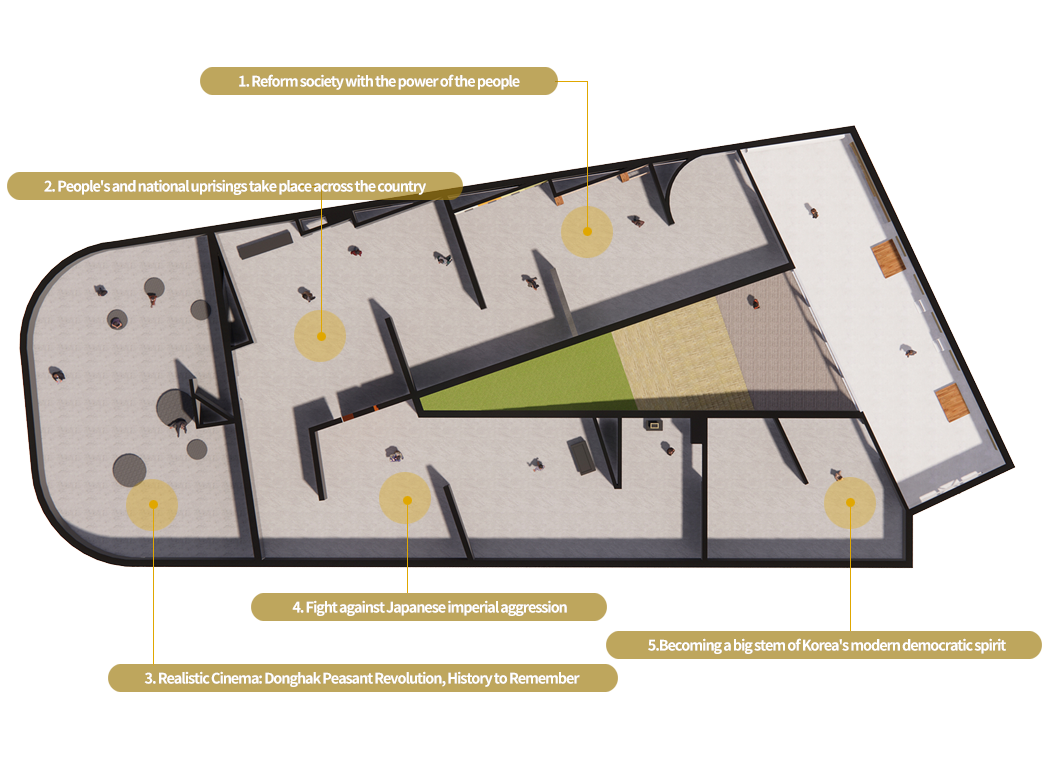SCROLL



three-dimensional picture

floor plan
When the corruption of the ruling class reached its peak in the 19th century, the lives of the people became more impoverished. The repeated peasant uprisings and Donghak ideology in the late Joseon Dynasty led the people to think that they should change the world with their own power and protect the country from foreign invasion, so that the common people could live comfortably. Finally, the peasants started the Donghak Peasant Revolution in 1894 (the Gabo year).
On July 23, 1894, when the Japanese forcibly occupied Gyeongbokgung and revealed their scheme of invasion, the second peasant uprising occurred all over the peninsula, except Pyeongan-do and Hamgyeong-do.
When the Donghak Peasant Revolution broke out, Japan considered it as an opportunity to advance into the continent by expanding its influence over Joseon. Japan dispatched large-scale troops and caused the Sino-Japanese war in Joseon. As the Japanese military’s invasion was overtly exposed, armed struggle against Japan by minjung and the Donghak Peasant army started to be developed from the end of July nationally
The spirit of equality and the possibility of a democratic order of the Donghak Peasant Army, which seemed to have disappeared as they lost their national sovereignty due to the Japanese colonial rule, lead to the March 1st Movement. It has been constantly recalled and reinterpreted in an endless effort to protect democracy after liberation. To this day, it has served as a foundation for the development of democracy in Korea and has been represented through civic movements.
 Please evaluate the satisfaction with the information provided on this page.
Please evaluate the satisfaction with the information provided on this page.